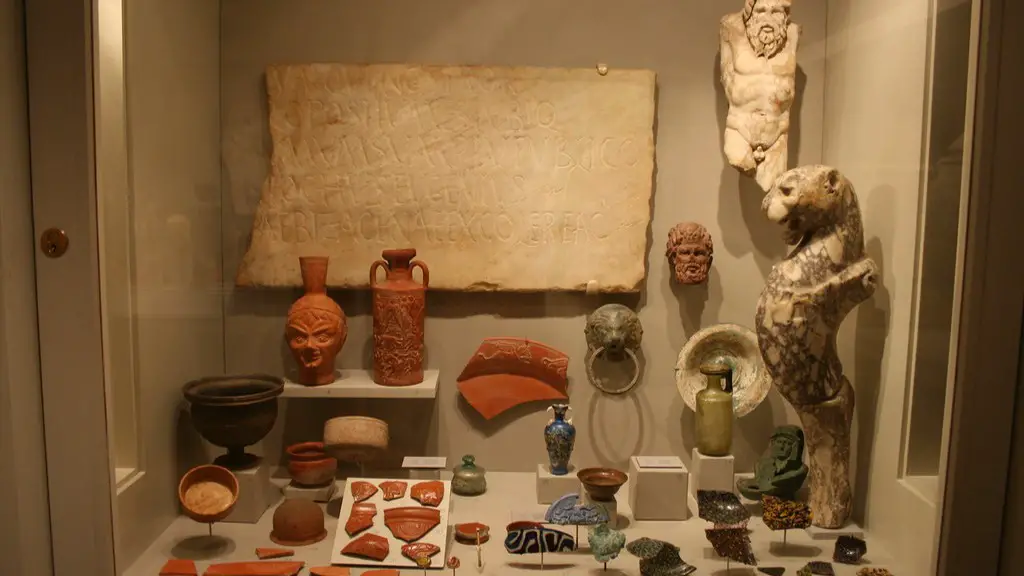The ancient Romans were a warlike people and fought often in wars. The Roman men were the soldiers and fought in the front lines. They were the ones who wielded the swords and shields and fought the enemy. The Roman women were usually the ones who stayed at home and tended to the household chores. However, there were some women who fought alongside the men. The Roman children were not allowed to fight in wars.
It is unclear how often men fought in war in ancient Rome.
How many wars did Ancient Rome fight in?
The Roman Empire was a period of great turmoil and conflict. This is particularly true at Rome, where in a period of 150 years the Romans fought four epochal conflicts against themselves: Marius / Sulla, Caesar / Pompey, Octavian / Antony, Galba / Otho / Vitellius / Vespasian. Each of these conflicts was a struggle for power within the Roman state, and each had a profound impact on the course of the Empire.
The Punic Wars were a series of three wars fought between Rome and Carthage from 264 BC to 146 BC. The First Punic War broke out in Sicily in 264 BC, with Rome and Carthage vying for control of the island. The Second Punic War began in 218 BC, when Hannibal invaded Italy and famously marched his army across the Alps to attack Rome. The Third Punic War saw Rome finally defeat Carthage in 146 BC, leading to the destruction of the city of Carthage.
How many men fought in Roman battles
A legion was a military unit of the ancient Roman army. A typical legion of this period had 5,120 legionaries as well as a large number of camp followers, servants and slaves. Legions could contain as many as 11,000 fighting men when including the auxiliaries.
The average number of years served by Roman legionary recruits was about ten. In 13 BC, Augustus decreed that the standard term of service for legionary recruits would be sixteen years, with a further four years as reservists (evocati). In AD 5, the standard term was increased to twenty years plus five years in the reserves.
Has Rome ever lost a war?
Cannae was a disaster unmatched across nearly 800 years of Roman history. A massive Roman force was defeated at a ratio of almost 10 – 1, with reports that less than 7000 of the entire Roman army escaped the field. 10,000 Romans left to guard their defensive camp were also captured.
Yes, the Romans did lose some wars throughout their history. Some notable losses came against the Germanic tribes and the Parthians. In both cases, the Romans likely underestimated their enemy and the difficulties of the local conditions.
Did any army defeat the Romans?
In one of the most decisive battles in history, a large Roman army under Valens, the Roman emperor of the East, is defeated by the Visigoths at the Battle of Adrianople in present-day Turkey. Two-thirds of the Roman army, including Emperor Valens himself, were overrun and slaughtered by the mounted barbarians. This victory paved the way for the Visigothic takeover of the Roman Empire in the West.
The Battle of Teutoburg Forest was a watershed moment in the history of Rome. It was the first time a major Roman army had been defeated in battle by barbarian tribes, and the scale of the defeat was staggering. Three legions, comprising some 25,000 men, were ambushed and annihilated by an army of Germanic tribes under the leadership of Arminius. The loss was a major blow to Rome’s prestige and signaled the beginning of the end of Roman hegemony in Europe.
Why were the Romans so good at war
The Roman soldiers were some of the most disciplined and well-trained soldiers in the ancient world. They underwent rigorous training that included marching 20 miles a day while wearing full armor. This helped to keep them in excellent physical condition and also helped them to learn specific tactics and maneuvers that were used in battle. The Roman army was a highly organized and effective fighting force that was able to conquer vast territories.
The Roman Army was a formidable fighting force in its day. Highly disciplined and skilled, the Roman Army was able to conquer vast swathes of the ancient world. At its height, the Roman Army was made up of 30 legions, or over 150,000 soldiers. This made the Roman Army one of the largest and most powerful militaries in history. The Roman Army was a key factor in the success of Ancient Rome, and its legacy is still evident in modern militaries around the world.
Did the Roman army train their men to fight?
Roman soldiers were required to train for four months before they could be sent out to fight. They learned marching skills first, followed by learning how to use their weapons. Then they began to spar with other soldiers. During the training exercises, the soldiers would also be taught to obey their commanders and either the Republic or the Emperor.
The Roman legion was one of the most impressive military units of its time. It was highly disciplined, well-trained, and heavily armed. In the first century AD, a legion typically comprised between five and six thousand men. All of the legionaries were Roman citizens. The legion was a key factor in the Roman Empire’s military success.
What was the average lifespan of a Roman soldier
It is interesting to note that the Roman lifespan for men was only 41 years. This means that the average Roman soldier would only have served in the army for 25 years before reaching the age of retirement. It is also worth noting that the entry age for the army was 18-22, so many of these soldiers would have been quite young when they began their service. Given the relatively short lifespan, it is impressive that many Roman soldiers were able to serve for as long as they did. It is possible that the military lifestyle contributed to the shortened lifespan, but it is also possible that the Roman soldiers were simply a hardy bunch. Regardless, it is clear that the average Roman soldier was not expected to live to a ripe old age.
It is interesting to note that for the last 3,000 years, dismounted soldiers have carried an average of 55 to 60 pounds. However, this has almost doubled in the last 200 years. Roman legionnaires, for example, carried almost 60 pounds. This increase in weight is likely due to the increased use of armor and weaponry over time.
Could Roman soldiers marry?
During the first two centuries AD, Roman soldiers were prohibited from contracting legal marriage. The masculine nature of Roman military discipline was the likely motivation for the ban. Nevertheless, many Roman soldiers formed de facto unions with women and fathered children.
The death penalty was incredibly brutal in the Roman Empire. Not only were people buried alive, impaled, and crucified, but they were also tortured beforehand. One particularly gruesome punishment was sewing a bound prisoner in a heavy sack with a snake, a rooster, a monkey, and a dog, then throwing the sack into the river. Needless to say, the death penalty was not something to be taken lightly.
What was the bloodiest day in Roman history
At the Second Punic War’s Battle of Cannae, the Carthaginian general Hannibal annihilated at least 50,000 of the Republican Rome’s legionaries, pushing the empire to the brink of collapse. This was a devastating blow to the Republic, which had already been struggling to maintain its grip on power. The battle proved that the Carthaginians were a force to be reckoned with, and showed that the Romans would need to be very careful in their dealings with them in the future.
The Battle of Mursa was a bloody and brutal conflict that severely weakened the Roman Empire. Constantius II emerged victorious, but at a great cost – many lives were lost on both sides, and the empire was left significantly weakened. This battle is known as one of the bloodiest of the century, and its effects are still felt today.
Warp Up
There is no definitive answer to this question as the frequency of men fighting in war varied greatly depending on the specific time period and conflict. However, it is safe to say that men were very often involved in war during ancient Rome and it was not uncommon for men to fight multiple times throughout their lifetime.
Overall, Roman men commonly fought in wars during the ancient times. There would be large scale conflicts as well as more personal duels between individuals. This was a significant part of Roman culture and helped shaped the historical period.





